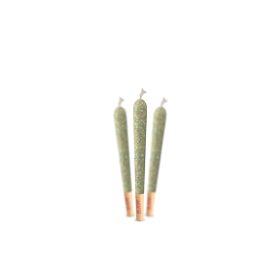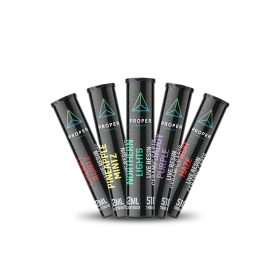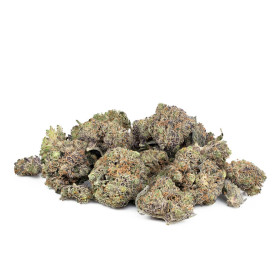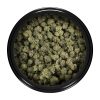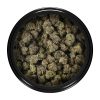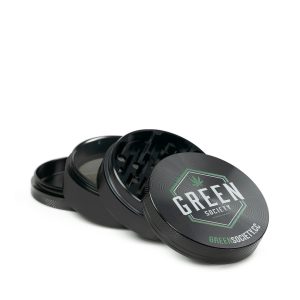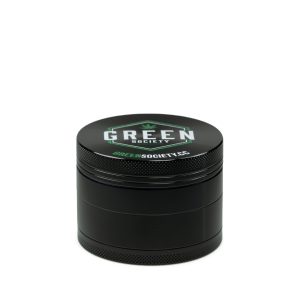Marijuana
Microdosing Cannabis: Everything You Need to Know
Did you know that nearly 40 percent of people curious about cannabis now consider microdosing for its subtle effects and wellness potential? Microdosing uses such small amounts that most users experience none of the classic highs, yet some report noticeable boosts in focus or mood. As interest grows, understanding the basics of microdosing cannabis helps you separate fact from hype and explore safer, more intentional ways to approach this plant.
Table of Contents
- What Is Microdosing Cannabis? Key Concepts Explained
- Popular Microdosing Methods and Product Types
- Dosing Strategies and User Experiences
- Legal Status and Regulation Concerns
- Risks, Side Effects, and Safety Precautions
Key Takeaways
| Point | Details |
|---|---|
| Microdosing Definition | Microdosing cannabis involves consuming tiny amounts to enhance cognitive functions and well-being without strong psychoactive effects. |
| Dosing Strategy | Start low with gradual increases, tracking personal reactions is essential to tailor the experience. |
| Administration Methods | Popular methods include oils, vaporized flower, tinctures, and low-dose edibles, each offering unique benefits. |
| Legal Considerations | Cannabis is classified as a Schedule I drug, necessitating awareness of local laws and potential legal risks for consumers. |
What Is Microdosing Cannabis? Key Concepts Explained
Microdosing cannabis is an emerging wellness approach where individuals consume extremely small, sub-perceptual quantities of cannabis to potentially enhance cognitive function and overall well-being. According to research from eurekalert.org, microdosing involves taking sub-perceptual doses over prolonged periods, with the primary goal of improving cognition, mood, and health without experiencing intense psychotropic effects.
What Exactly Constitutes a Microdose?
A microdose represents approximately one-twentieth to one-fifth of a typical full cannabis dose. As detailed by pmc.ncbi.nlm.nih.gov, this approach allows users to potentially experience subtle therapeutic benefits while maintaining full mental clarity and functionality. The key characteristics of a microdose include:
- Imperceptible psychoactive effects
- Minimal cognitive disruption
- Potential for enhanced mood and creativity
- Reduced risk of experiencing overwhelming cannabis-related experiences
The fundamental philosophy behind microdosing is achieving a balanced, controlled cannabis experience that integrates potential wellness benefits into daily life without significant impairment. Unlike traditional cannabis consumption, which often focuses on immediate and intense effects, microdosing represents a nuanced, intentional approach to cannabis use.
For those interested in exploring this method, careful dosage tracking, personal experimentation, and understanding individual tolerance levels become crucial. Always consult healthcare professionals and adhere to local regulations when considering any cannabis-related wellness strategy.
Popular Microdosing Methods and Product Types
When exploring microdosing cannabis, users have several administration methods to choose from, each offering unique benefits and experiences. According to research from ukmccs.org, the most common approaches include oils and vaporizing dried flower products, each providing distinct advantages for precise dosage control.
Microdosing Product Types
The primary methods for microdosing cannabis encompass:
- Cannabis Oils: Ideal for precise dosage measurement
- Vaporized Flower: Offers rapid onset of effects
- Tinctures: Easy to administer with precise dropper mechanisms
- Low-Dose Edibles: Provide consistent, controlled intake
Oils represent a particularly sophisticated microdosing method. When held under the tongue for buccal absorption, they deliver longer-lasting effects and allow for extremely precise dosage control. Vaporizing, in contrast, provides rapid relief and allows users to quickly assess their body’s response to minimal cannabis quantities.
Here’s a comparison of popular cannabis microdosing product types:
| Product Type | Dosage Control | Onset Time | Key Advantages |
|---|---|---|---|
| Cannabis Oils | Very precise | 30-60 minutes | Easy tracking Subtle effects |
| Vaporized Flower | Moderately precise | 1-5 minutes | Rapid onset Quick adjustments |
| Tinctures | Precise | 15-45 minutes | Easy to administer Flexible use |
| Low-Dose Edibles | Precise | 45-120 minutes | Consistent intake Discreet option |
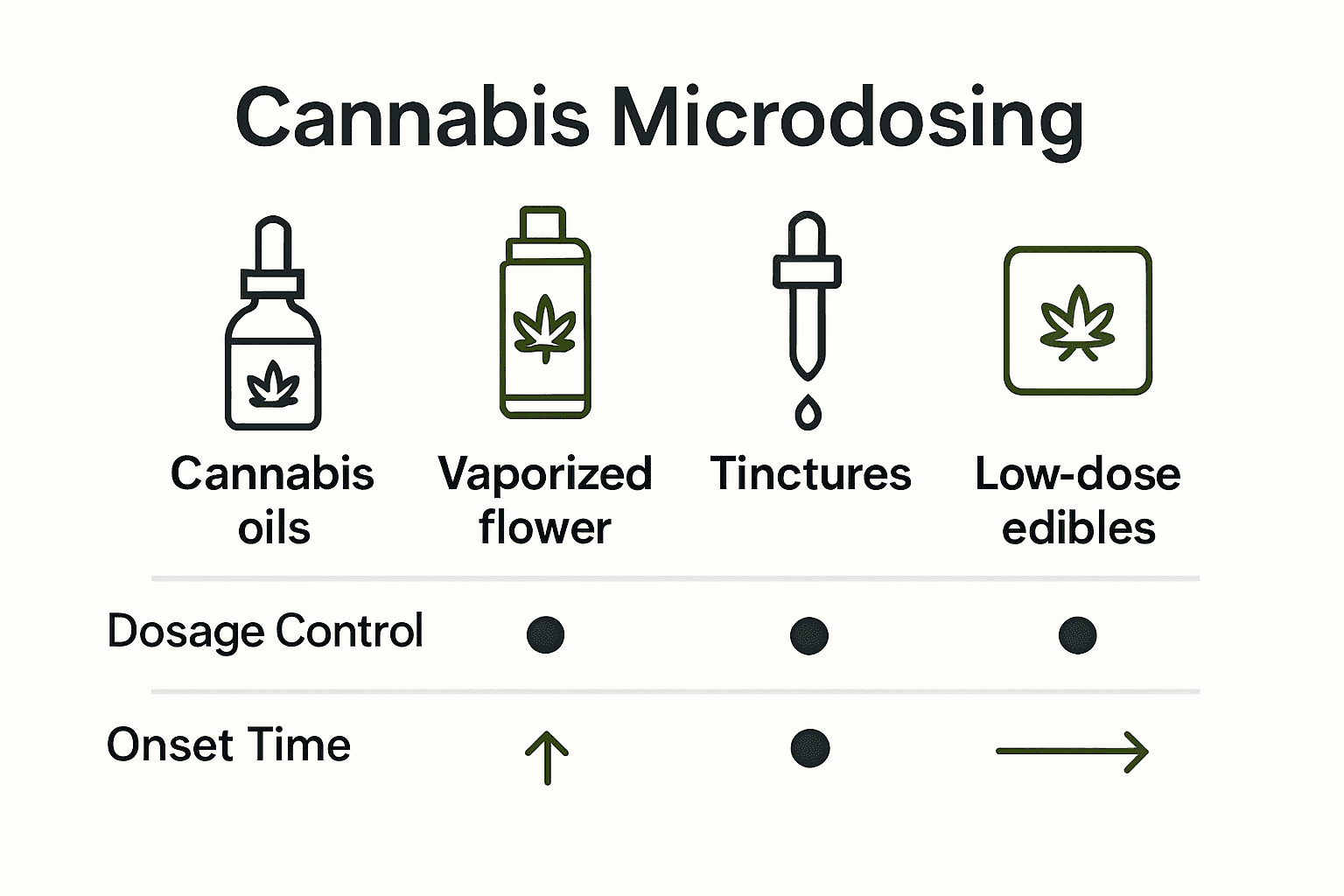
For those interested in exploring microdosing, the pros and cons of disposable cannabis vape pens can offer additional insights into portable and convenient consumption methods.
 Always start with the lowest possible dose, track your personal response carefully, and consult healthcare professionals to develop a safe and effective microdosing strategy.
Always start with the lowest possible dose, track your personal response carefully, and consult healthcare professionals to develop a safe and effective microdosing strategy.
Dosing Strategies and User Experiences
Microdosing cannabis requires a carefully calibrated and personalized approach, with dosage strategies that prioritize individual tolerance and therapeutic goals. According to research from ukmccs.org, the fundamental principle is to start low and increase gradually, typically at weekly intervals.
Recommended Dosing Guidelines
The dosage parameters vary significantly depending on individual factors, but general recommendations include:
- Begin with the lowest possible dose
- Increase incrementally (1-2.5mg weekly)
- Monitor personal physiological responses
- Adjust based on individual tolerance and desired effects
For THC-specific microdosing, ukmccs.org suggests particularly conservative starting points: 2mg at night for most adults, and an even lower 1mg for geriatric patients or those with cardiac histories. Most users will eventually find their optimal range between 100-200mg of CBD oil daily, though this can vary dramatically between individuals.
Successful microdosing is less about following rigid protocols and more about developing a nuanced, personal understanding of how cannabis interacts with your unique biochemistry. Keeping a detailed journal to track dosage, method of consumption, and subsequent effects can provide invaluable insights into your ideal microdosing strategy.
Remember, patience and careful self-observation are your greatest tools in this journey.
Legal Status and Regulation Concerns
Navigating the legal landscape of cannabis microdosing requires careful consideration and understanding of complex regulatory frameworks. According to research from pmc.ncbi.nlm.nih.gov, the FDA currently classifies cannabis as a Schedule I drug, which presents significant challenges for both consumers and researchers. This classification implies that cannabis is considered to have no accepted medical use and carries a high potential for abuse.
Key Legal Considerations
The regulatory environment for cannabis microdosing involves several critical challenges:
- Inconsistent legal status across different jurisdictions
- Ongoing federal restrictions
- Limited research opportunities
- Potential legal risks for consumers
- Variability in medical and recreational cannabis laws
As highlighted by eurekalert.org, substances commonly used in microdosing are typically classified as Schedule 1 controlled substances. This classification creates significant barriers, including potential legal risks and concerns about product quality due to the lack of standardized manufacturing processes. Consumers must be acutely aware of their local laws, as legal interpretations can vary dramatically between different regions and jurisdictions.
Practical advice for navigating these complex legal waters includes staying informed about local regulations, consulting legal professionals when necessary, and maintaining a cautious approach to cannabis consumption. Always prioritize understanding the specific legal context of your location before engaging in any microdosing practices.
Risks, Side Effects, and Safety Precautions
Microdosing cannabis, while seemingly subtle, comes with potential physiological and psychological considerations that users must carefully understand. According to research from ukmccs.org, high-dose THC can potentially trigger extreme reactions including anxiety, increased pulse rate, and in rare instances, psychosis.
Potential Side Effects to Monitor
Key risks and potential side effects include:
- Temporary short-term memory impairment
- Potential anxiety or paranoid thoughts
- Altered perception and sensory experiences
- Potential impacts on cognitive functioning
- Increased heart rate
- Potential mood fluctuations
Interestingly, as noted by royalsociety.org, while cannabis can produce effects like euphoria, relaxation, and sensory intensification, the risk of acute toxicity remains very low. Most users experience mild perceptual changes, including time distortions and heightened introspection, without significant medical risks.
To minimize potential negative experiences, experts recommend starting with extremely low doses, maintaining a controlled environment, and avoiding consumption before critical tasks requiring full cognitive attention. Always listen to your body, stop if uncomfortable effects emerge, and consider consulting healthcare professionals, especially if you have pre-existing medical conditions or are taking other medications.
Discover the Perfect Start to Your Cannabis Microdosing Journey
Microdosing cannabis offers a subtle yet powerful way to enhance your well-being without overwhelming effects. If you are seeking precise dosing and consistent product quality to safely explore this nuanced approach, the challenge lies in finding trustworthy sources that support your personalized needs. Key concepts like starting with low THC doses, choosing oils or tinctures for control, and avoiding unwanted side effects all matter when selecting your cannabis products.

Take control of your microdosing experience today by browsing high-quality cannabis oils, low-dose edibles, and vaporizers designed for careful dosing at GreenSociety.cc. Our platform offers a wide selection crafted for wellness-minded consumers who want discreet, reliable access and fast delivery. Start small, track your progress, and find your ideal balance with our curated products that meet your goals. Visit https://greensociety.cc now and step confidently into a safer, smarter cannabis routine.
Frequently Asked Questions
What is microdosing cannabis and how does it work?
Microdosing cannabis involves consuming very small amounts of cannabis, typically one-twentieth to one-fifth of a regular dose, to enhance cognitive function and overall well-being without significant psychoactive effects. It allows users to achieve subtle therapeutic benefits while maintaining mental clarity.
What are the common methods for microdosing cannabis?
Common methods for microdosing cannabis include oils, vaporized dried flower, tinctures, and low-dose edibles. Each method offers distinct advantages, such as precise dosage control and varying onset times.
How should I start microdosing cannabis?
Start microdosing with the lowest possible dose, gradually increasing it in small increments (1-2.5mg) at weekly intervals. Monitor your physiological responses and adjust based on your individual tolerance and desired effects.
What are the potential risks and side effects of microdosing cannabis?
Potential risks include temporary memory impairment, anxiety, altered perception, increased heart rate, and mood fluctuations. It’s essential to start with low doses and pay attention to your body, especially if you have pre-existing conditions. Consult healthcare professionals for guidance.
Recommended
- Magic Mushrooms: Everything You’ve Been Afraid to Ask
- Complete Guide to Using Cannabis for Anxiety ~ Green Society Blog
- Everything You Need to Know About Cannabis and Cannabinoids ~ Green Society Blog
- Diabetes Prevention: How Cannabis Stabilizes Blood Sugar Levels ~ Green Society Blog

